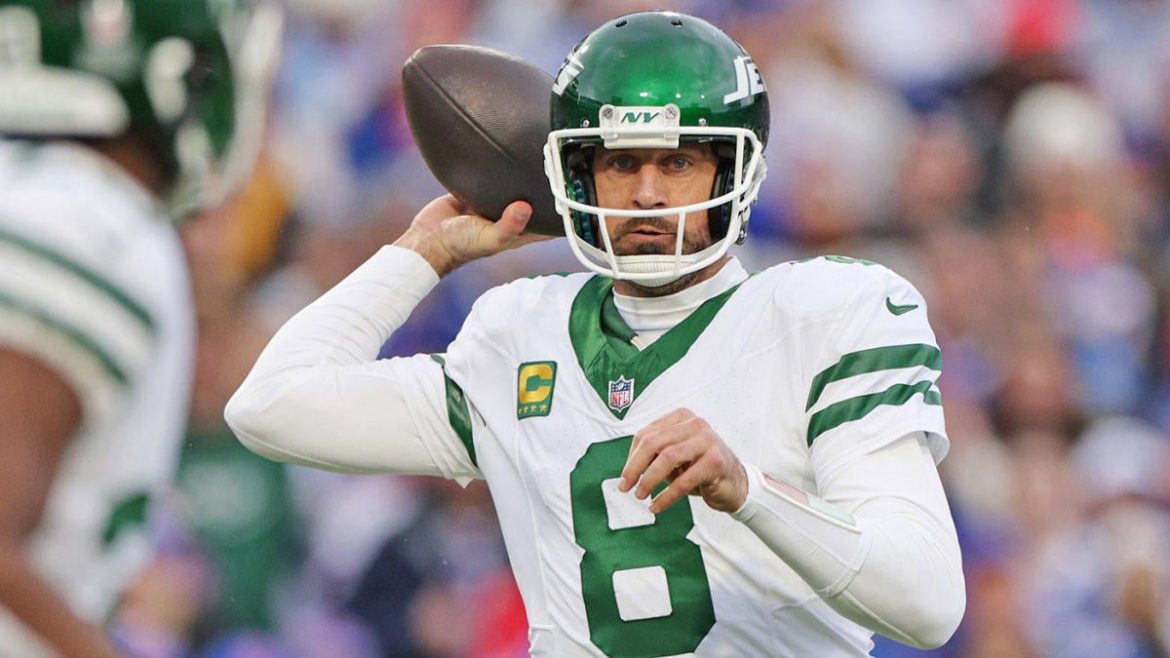Aaron Rodgers’ Potential Impact on the Pittsburgh Steelers: Winners, Losers, and Lingering Questions
The saga surrounding Aaron Rodgers’ move to the Pittsburgh Steelers and its ramifications has sparked intense debate among NFL analysts, fans, and fantasy football enthusiasts. Rodgers’ potential signing and his existing relationship with the Steelers’ dynamic wide receiver D.K. Metcalf have elevated expectations for the team’s offense, yet they also raise doubts about the overall effectiveness of the move given the franchise’s broader challenges. This detailed analysis explores the main winners and losers from this complex scenario, the implications for Steelers’ offense, and the unanswered questions that cloud the 2025 season outlook.
—
The High Hopes: Aaron Rodgers and Offensive Boost
Aaron Rodgers, a future Hall of Fame quarterback with a storied career, brings undeniable pedigree. Despite his age—41 years old in 2025—Rodgers finished the most recent season with impressive stats: 3,897 passing yards, 28 touchdowns, and a relatively low interception rate. His improved late-season form, attributed partly to better health, fueled the Steelers’ optimism for him to revitalize their offense.
Rodgers’ throwing sessions with D.K. Metcalf have been particularly encouraging. Metcalf, a rare physical specimen and an established NFL star with multiple 1,000+ yard seasons and an average of eight touchdowns per year, provides Rodgers with a top-tier target. Insider reports describe their workouts as “intimate,” signaling growing chemistry that could translate into on-field success. For fantasy football players, this duo represents a significant upside—Metcalf and tight end Pat Freiermuth are considered the biggest beneficiaries of Rodgers’ possible arrival.
The offense’s increased firepower could mitigate the Steelers’ historical deficiencies, particularly with the wide receiver position and quarterback depth. Rodgers’ experience and skill set contrast with Pittsburgh’s previous quarterback situation that involved underperforming options such as Skylar Thompson and Mason Rudolph, whose inconsistencies have hampered passing efficiency.
—
The Persistent Concerns: Is Rodgers Enough?
Despite Rodgers’ prowess and potential positive impact, doubts linger. The overarching theme among analysts is that the Steelers’ offensive woes may run too deep to be resolved by a quarterback change alone. Pittsburgh’s “Supporting Cast Rating” is notoriously low; their offensive line struggles and limited complementary skill positions have traditionally hindered quarterback performance. Even with Rodgers’ arrival, the question remains whether these systemic deficiencies will constrain his effectiveness.
The Steelers’ decision not to draft or aggressively pursue younger, high-profile quarterbacks in the 2025 NFL Draft further complicates the outlook. Instead, they selected Ohio State’s Will Howard in the sixth round, opting against prospects like Shedeur Sanders, Jaxson Dart, or Jalen Milroe. This suggests confidence in Rodgers’ short-term contribution but leaves the long-term quarterback situation unresolved.
Moreover, the controversial trade involving wide receiver George Pickens adds complexity. Moving Pickens, a promising young talent, has drawn criticism, with some viewing it as sacrificing future upside for immediate needs. Combined with Metcalf’s acquisition and extension, it appears the Steelers are doubling down on established stars but possibly at the expense of roster balance.
—
Winners in This Equation
– Aaron Rodgers: Intrinsically benefits from joining a team with notable weapons like Metcalf and a chance to resurrect his career after a tumultuous final season with the Jets.
– D.K. Metcalf: Gains a quarterback with elite passing ability, likely boosting his yardage and touchdown opportunities, and enhancing his fantasy football value.
– Pat Freiermuth: As a key target in the passing game, Freiermuth’s production is poised to increase in the Rodgers-led offense.
– Steelers Fans and Fantasy Players: The potential excitement and improved statistics for offensive players represent a significant upside.
—
Losers and Lingering Doubts
– Steelers Offensive Line and Supporting Cast: Without substantial improvements, Rodgers may struggle to perform consistently or avoid injury, reflecting ongoing organizational issues.
– George Pickens: The receiver trade, while addressing immediate needs, risks hampering the team’s future depth and development.
– Backup and Developing Quarterbacks: Limited investment in younger QBs suggests constrained developmental opportunities behind Rodgers.
– Fantasy Enthusiasts Betting on Steelers’ Supporting QBs: With Rodgers as starter, secondary quarterbacks such as Skylar Thompson have diminished value.
– The Overall Steelers Team Performance: Even with Rodgers, some analyses suggest the Steelers may remain “bad,” suggesting offense alone may not lift the entire team significantly.
—
Conclusion: A 2025 Season Shrouded in Uncertainty
Rodgers’ potential signing to the Steelers marks one of the most compelling quarterback narratives going into the 2025 NFL season. His relationship and chemistry with D.K. Metcalf promise an exciting offensive resurgence, offering a lifeline to a franchise craving stability at the quarterback position. Yet, the Steelers’ broader roster issues and recent roster moves inject skepticism about whether this boost will translate into meaningful wins.
The 2025 season bears watching not just for Rodgers’ individual performance but for how the Steelers manage to either capitalize on this opportunity or struggle under systemic flaws that no single player can fix. Ultimately, the Steelers’ decision to lean on Rodgers, supported by Metcalf’s talents, presents a fascinating case study in risk, reward, and the delicate balance of team construction in today’s NFL.





